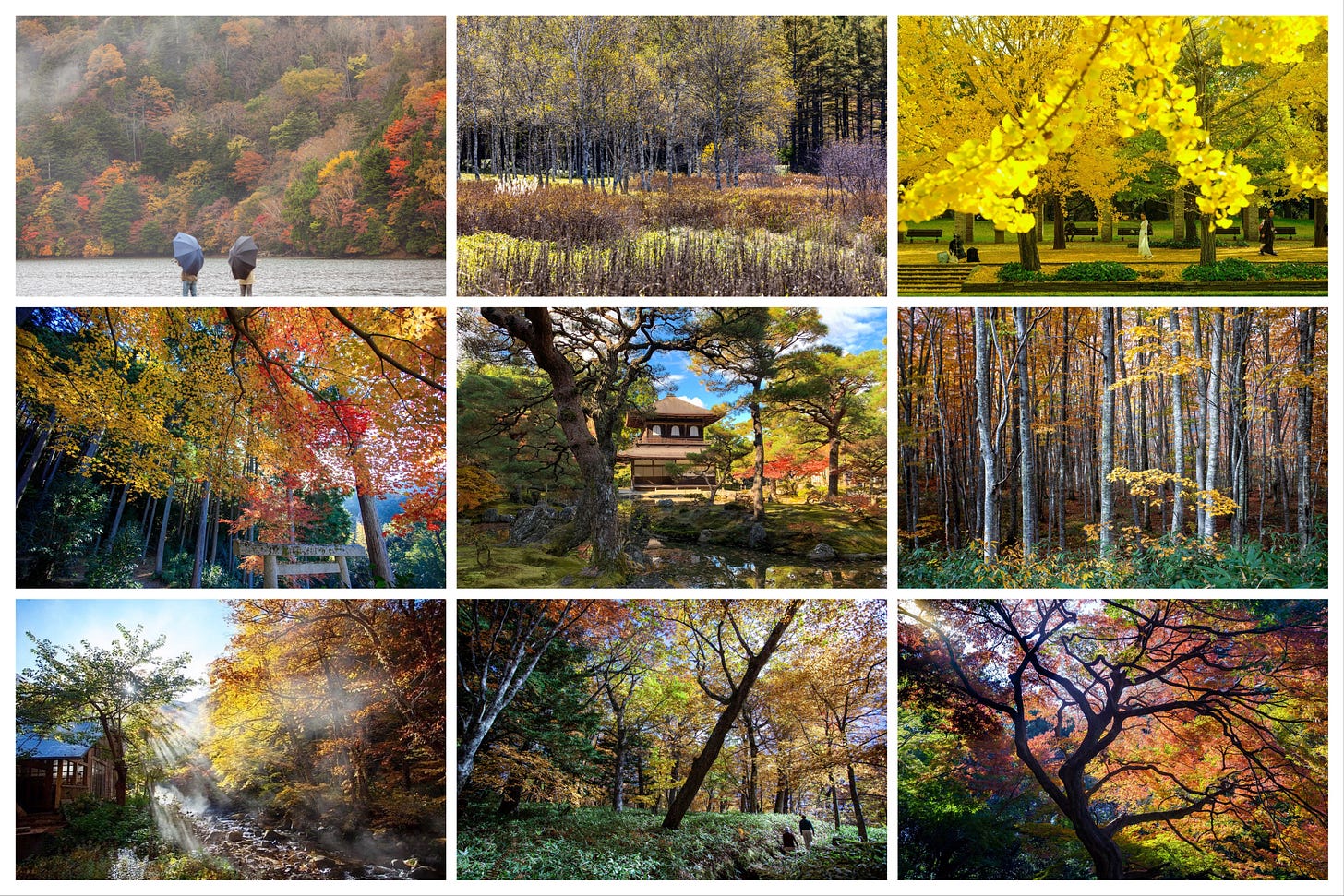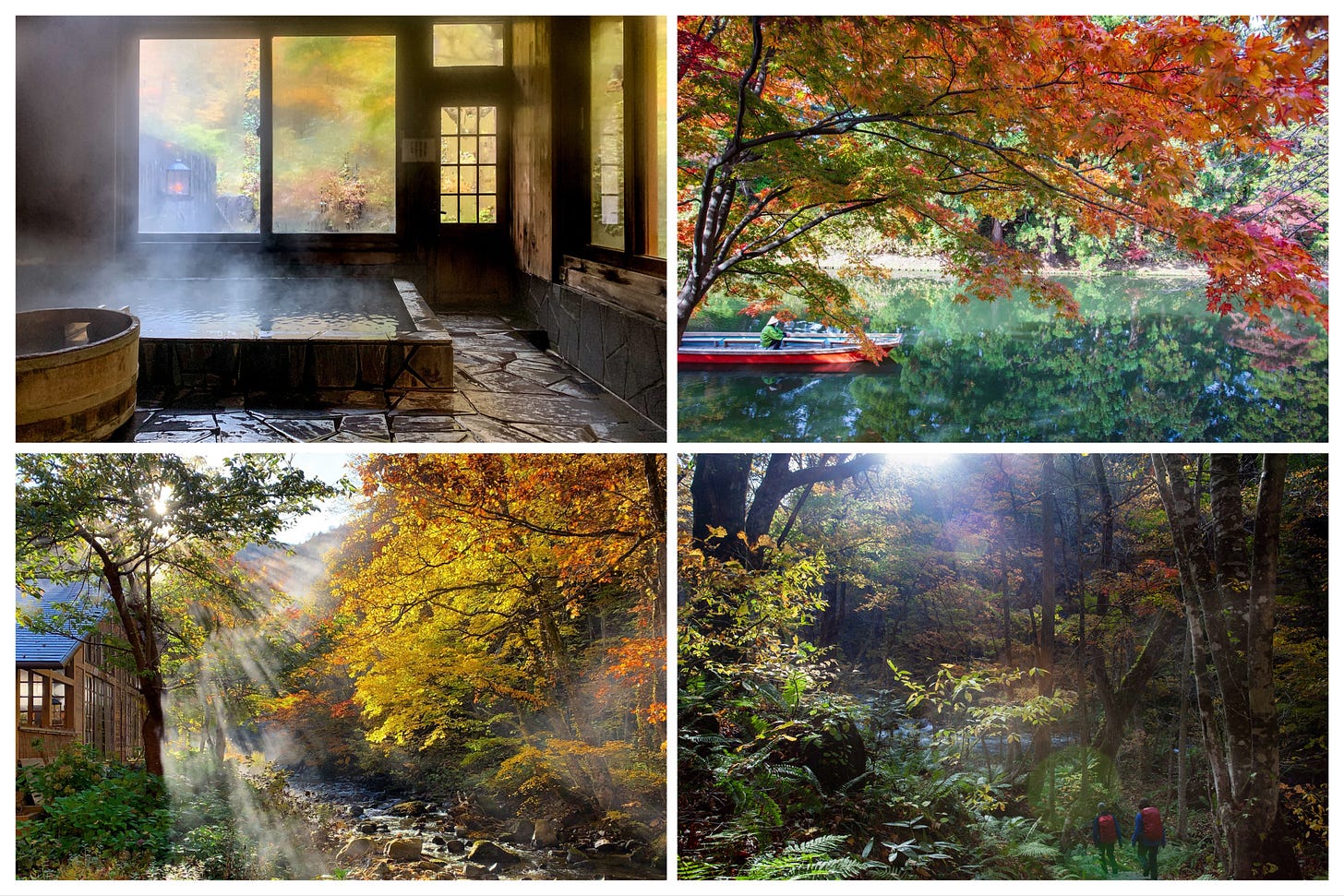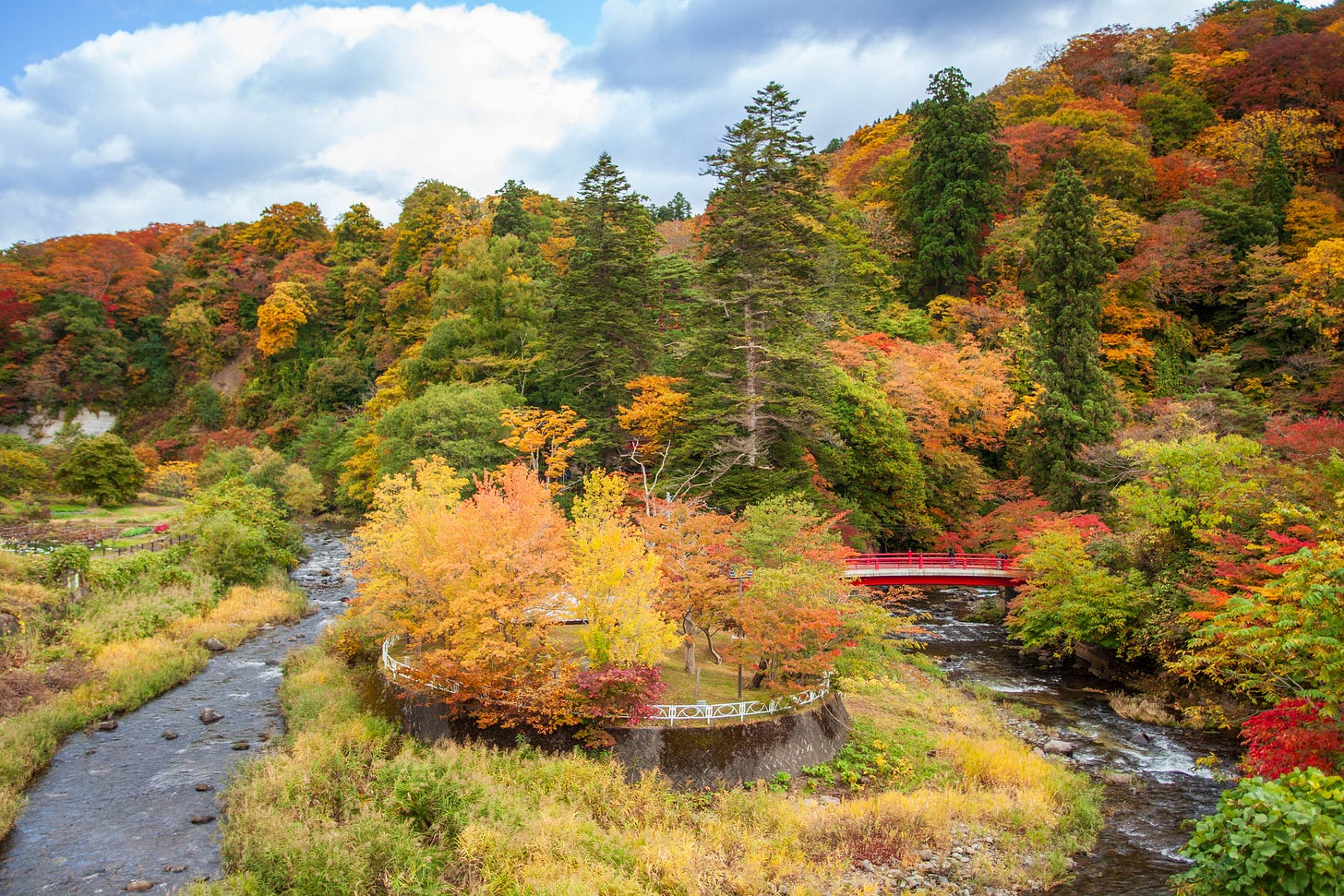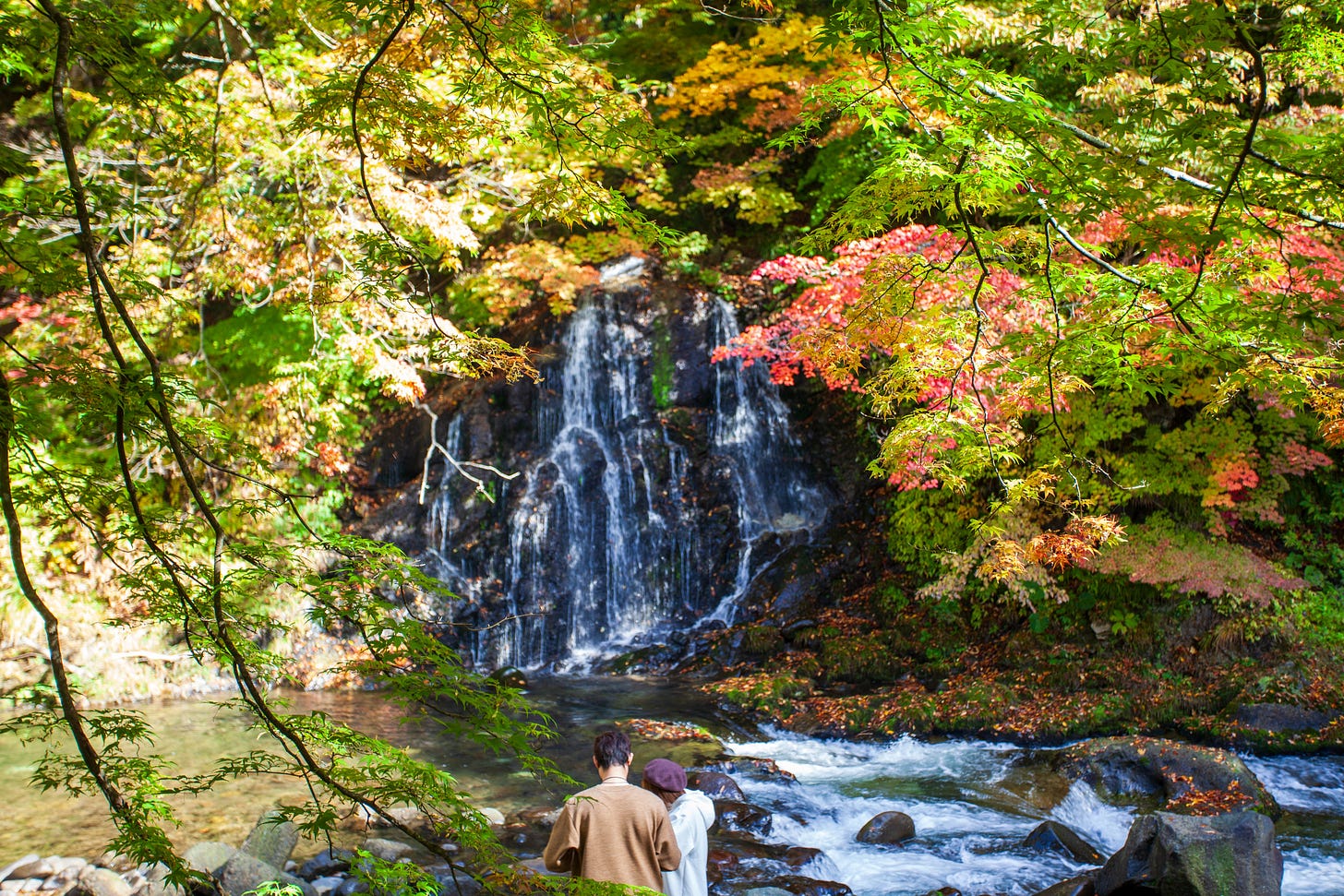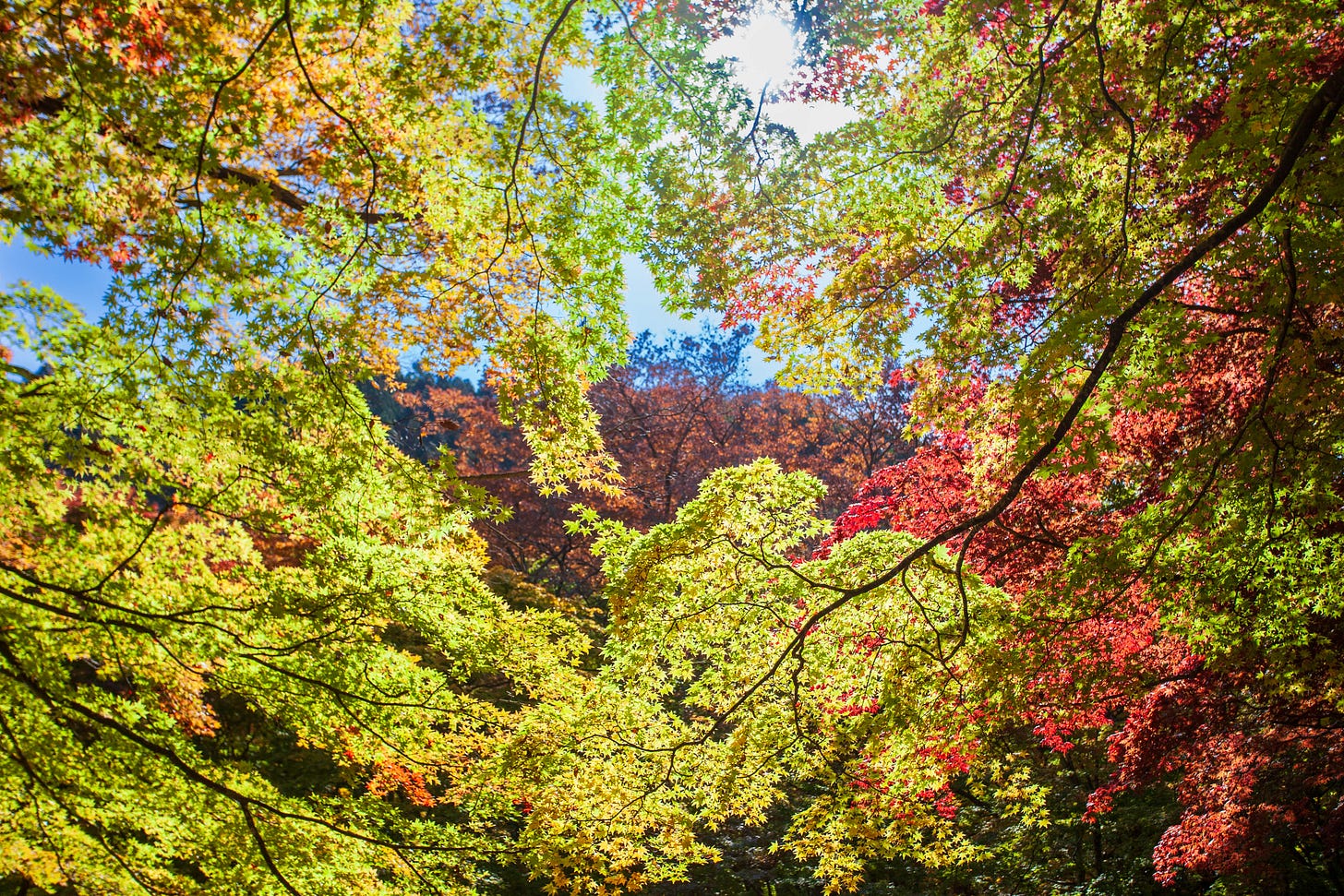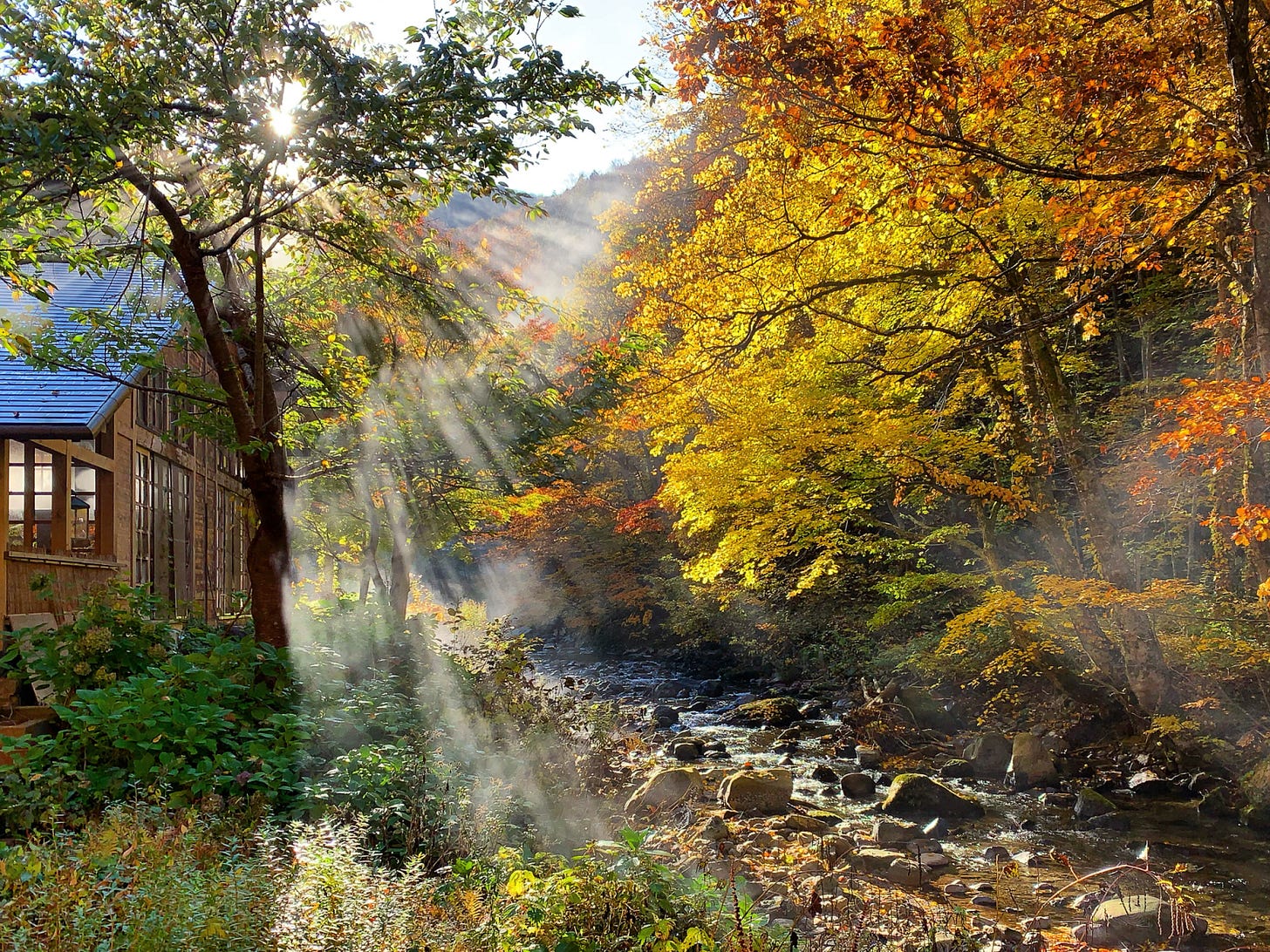Blue Forests of Japan: Autumn Trip to Aomori
Travel diaries: itinerary suggestion for a fall colors trip to Aomori, Tohoku.
Good afternoon,
One more month, and we will finally make it to the other side, having survived another summer in Japan. The temperatures in Hokkaido have already begun to drop, and the prefecture will soon be greeting the autumn colors, starting as early as mid-September in its high-altitude regions, like Daisetsuzan National Park.
At the risk of sounding like a broken record, I will say it again: autumn is my favorite season in Japan. It comes with breathable temperatures that bring back the simple joys of life, such as walking to the grocery store without feeling like a contestant in Survivor, less eventful skies once the typhoon season ends in late October, and, of course, the gorgeous autumn colors that turn even the most ordinary scenes into highly cinematic moments.
I am, of course, hardly alone in my love of Japanese autumns. In recent years, the foliage season has become one of the most popular periods for trips to Japan, almost matching the fame of the cherry blossoms. This inevitably brings similar crowds to cities like Kyoto, which, never shy of showing off, certainly puts on a show during the season with its hundreds of tree-lined temples and gardens.
This month’s extra post for paid subscribers will, however, take us to a region of Japan that, despite the slowly growing popularity, still remains far less visited than Kyoto: Aomori, the northernmost prefecture of Tohoku. The region, truly as enigmatic as its name, “blue forest”, suggests, welcomes the autumn colors in late October, about a month earlier than Tokyo and Kyoto.
Being the autumn colors addict I am, Aomori, along with Kyoto and Oku-Nikko in Tochigi, has secured a permanent spot on my repeat travel list each fall. Much like my annual foliage trips to Kyoto (relevant post: One Fine Autumn Day in Kyoto), I tend to follow the same itinerary in Aomori, with small adjustments here and there, occasionally extending the trip to the other prefectures in Tohoku if the time permits.
So, without further ado, here’s my suggested itinerary for a fall colors trip to Aomori, inspired by my own travels. Starting in Aomori City, we'll slowly make our way to the more rural parts of the prefecture and conclude the trip at the famous Oirase Stream near Lake Towada.
Renting a car will, undeniably, make it easier to cover all the spots below, but I always rely entirely on public transportation when I travel alone to the region, so that is also doable. Unless you are already on a nationwide Japan Rail Pass, I highly recommend the JR East Tohoku Pass for this trip (available to all foreign passport holders, including residents of Japan), which comes in two versions: a five-day pass for 30,000 yen and a ten-day pass for 48,000 yen (half the price for kids between 6-11). Among all the train passes available to visitors in Japan, the JR East Tohoku Pass is one of the best in terms of the savings it offers.
Day 1 - Aomori City
Each year, around the Culture Day holiday/long weekend in early November, I catch one of the last northbound Shinkansen trains from Tokyo on a Friday evening after work and arrive in Aomori City a little over three hours later. Assuming you’re less pressed for time than I am, you might instead opt for a morning departure since the views as the train moves deeper into Tohoku are spectacular.
I usually stay in Aomori just for the night and aim for one of the earliest trains bound for the Kuroishi area the next morning. When in Aomori, I always stay at Daiwa Roynet, as it is centrally located, offers decent rooms, and features a very lively bistro on the first floor that starts breakfast service at 6:30 a.m. - ideal for those looking for an early start.
When I visited the city last year with friends, we had a half day to spend in the town before starting our fall colors-oriented itinerary to the rural parts of the prefecture. We enjoyed our brief time in the city with a long breakfast at Uguisu, the bistro on the first floor of the hotel, a walk through the fish market, and a tour of the Nebuta Museum, which features the giant floats built each year for Aomori`s famous Nebuta Festival, which takes place in August and is one of the most cherished matsuri in the country. On the night of our arrival, we had dinner at Izakaya Jinsuke, which offers a satisfyingly diverse menu of classic izakaya fare, ranging from fish dishes to yakitori, in a very local and cozy setting.
Day 2 - Nakano Momijiyama and Aoni Onsen
The second day on my suggested (and commonly followed) itinerary marks the real start of the autumn foliage journey, requiring some logistical juggling with local trains, buses, and a shuttle. All this is in service of visiting one of Aomori’s most iconic fall color viewing spots, Nakano Momijiyama—known as Maple Mountain—followed by a stay at one of my favorite onsen in Japan, Aoni.
When traveling on my own, I usually catch one of the early trains from Aomori Station—just a few minutes’ walk from Daiwa Roynet Hotel—bound for Hirosaki (a 45–55 minute ride), where I transfer to another train for Kuroishi (about 30 minutes). At Kuroishi, I board the local bus that arrives at Nakano Jinja stop in about 30 minutes, just a step away from the entrance of the Maple Mountain, Nakano Momijiyama.
You may understandably wish to avoid all this hassle. In that case, you have the option to rely on the services of Aomori Taxi, which can be booked online and will take you to Nakano Momijiyama or all the way to Aoni Onsen for a fixed rate of approximately 12,000 yen. This is an ideal option, especially if you are a group of three or more.
Regardless of your mode of transportation, Nakano Maple Mountain will likely make you forget all your logistical troubles once you catch sight of it from the nearby bridge. The park greets you with a view that would probably be among the best-selling autumn colors postcards, if it were printed on one (and it might have been). The lower part of the park features a picturesque red bridge, a perfectly positioned waterfall, and, during the brief peak fall color periods, a fair amount of crowds.
I usually spend more time at Kanpudia, the open square reached by a steep but very short hike through Nakano Shrine. The square is home to a few dozen trees that showcase nearly every shade of autumn color at the peak of the season. There are also a few short hiking trails in the area that I haven’t yet been brave enough to wander into, as Aomori is dense bear territory.
If you started the day early, you might still have a few hours to spare after touring Momijiyama (perhaps even twice) before the private shuttle to Aoni Onsen departs at 3 p.m. (you need to book your seat at least a day in advance). The shuttle leaves from the Nijinoko roadside station, about an hour’s walk from Momijiyama. I usually take the walk, as the road is flat with a sidewalk (including a short tunnel), and the scenery is lovely; however, there is also the bus option. The bus that connects Kuroishi to the Maple Mountain also stops at Nijinoko.


